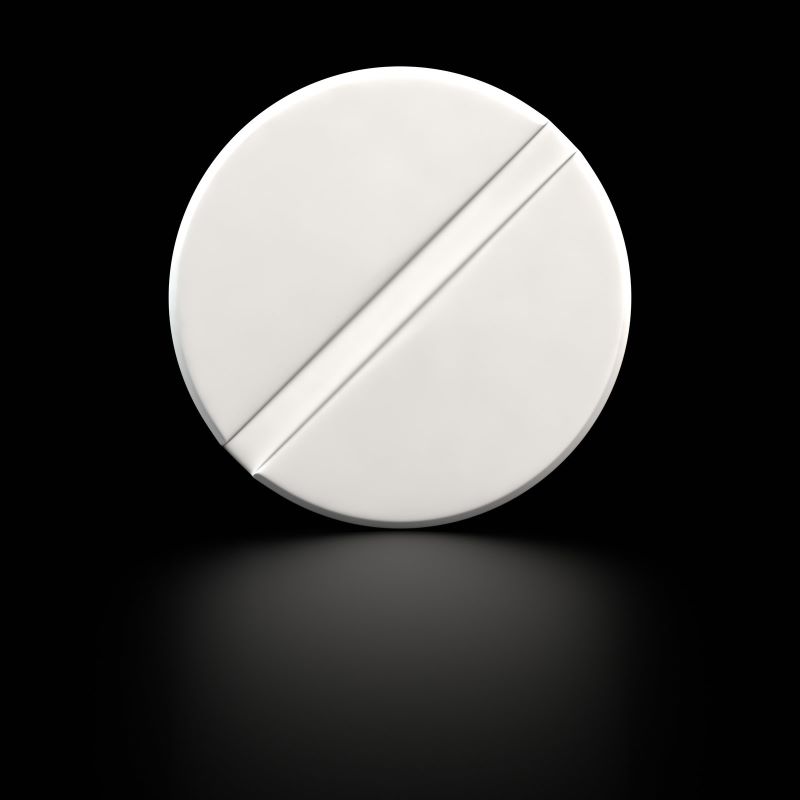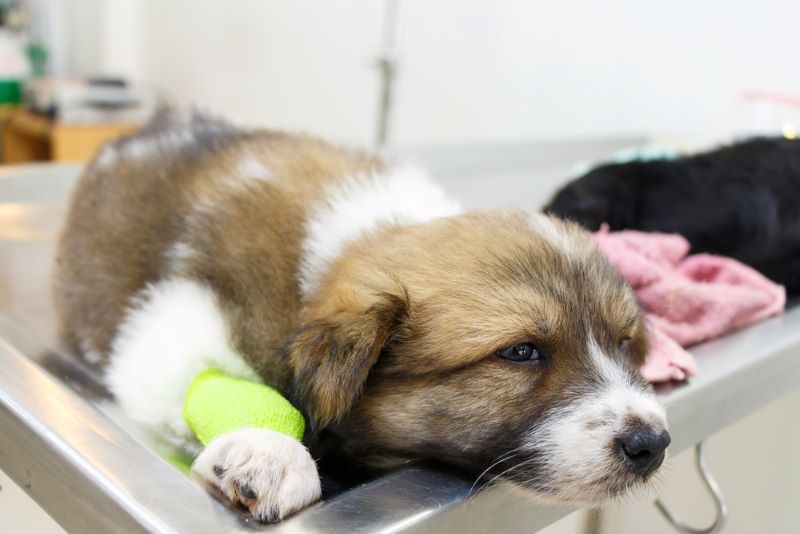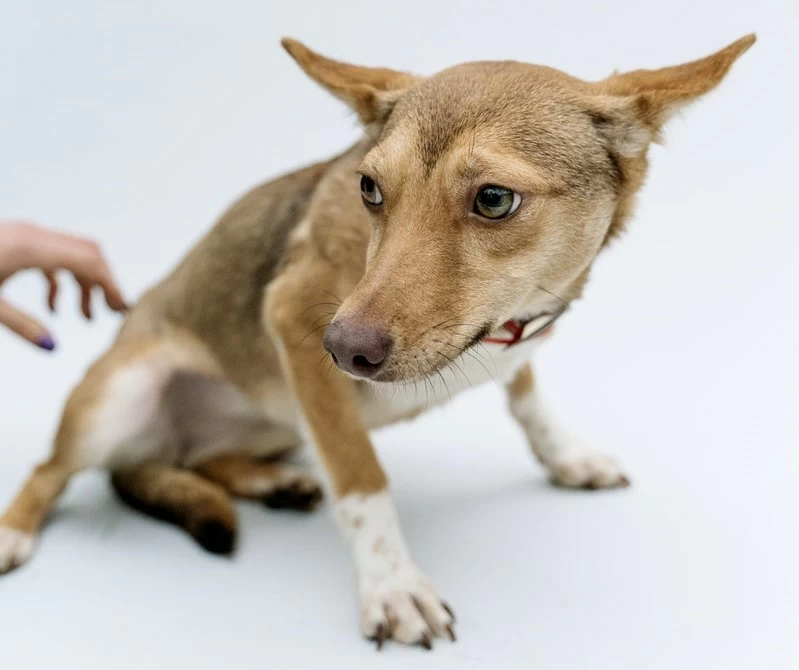Your dog’s at it again.
Popping things into its mouth like a canine Pacman reincarnate, it wasn’t satisfied with inhaling your Airpods or gobbling up your Gabapentin capsules.
Now, it’s found its way into your medicine cabinet again, forcing you to exclaim with tired resignation,
“My dog ate a 1mg Klonopin!”
“What’s going to happen if a dog eats a 1mg Klonopin?” You’re probably wondering.
Luckily, unless your dog is a tiny or toy breed (and I’m talking 5 pounds or less here), it’s most likely not going to suffer too much in the form of negative effects.
Your dog may still be a little wobbly or sleepy, but that’s to be expected with some pups and their specific sensitivity to benzodiazepines.
The typical recommended dosage of Klonopin– scientifically named clonazepam– for dogs is between 0.05 to 0.25 per pound of body weight.
If a teacup dog like a Pomeranian or Chihuahua, or a little forever-famished puppy gets a hold of a 1mg Klonopin tablet, it might be in for a bit more of an ordeal.
Side effects of clonazepam ingestion in dogs can include disorientation, vomiting, ataxia, excessive drooling, and fatigue.
In higher overdose ranges, the poor pooch may experience depression in heart and respiration rates.
In such cases, the best thing that you can do is to take the dog to your vet as quickly as possible.
By doing so, the negative effects of the drug can be minimized through a variety of different methods, such as emesis, fluid therapy, stomach pumping, or the administration of certain medications.
What Is Klonopin, Anyway?
Klonopin is one of the many brands of the medication Clonazepam.
Clonazepam is an anticonvulsant drug that is used in humans to treat anxiety, panic disorders, and seizures.
Belonging to a class called benzodiazepines, it works to calm the brain and nerves by enhancing the abilities of the GABA receptors.
Klonopin is usually taken orally in the form of a tablet (either 0.5mg, 1mg, or 2mg), and effects start to take place within sixty minutes and last for anywhere from six to twelve hours.
Though only formally approved for human use, Klonopin is quite often prescribed by vets ‘off-label’ for use in canines to treat the same issues of anxiety and seizures.
What Happens if A Dog Eats A Klonopin?

When it comes to Klonopin prescribed from treatment of anxiety symptoms, vets generally recommend a dosage range of 0.05-0.25 mg/lb.
So as an example, if your dog weighs approximately 10 pounds, it can safely receive a maximum dose of 2.5 mg.
As you can see, even for a relatively small dog a dose of 2.5mg clonazepam is largely harmless.
As such, 1 mg of Klonopin will likely have very minimal effects (if any at all) on a pup unless it is of a tiny or toy breed.
As explored above, Klonopin (also known as clonazepam) is an anti-seizure drug used to treat convulsions.
It acts by inhibiting select brain receptors, and in the process minimizes stress and anxiety. Due to its habit-forming nature, it’s only available via specialist prescription.
Again, your dog should be completely fine provided it consumed a safe amount of clonazepam (which 1mg most probably is!).
With that said, it’s not uncommon for some dogs to experience something called “paradoxical excitation/stimulation”- which is really just a smart-sounding way of saying a ‘low dose reaction’ to the benzodiazepine medicine!
Therefore, even when your dog only eats a miniscule 0.5mg or 1mg pill, it may become sleepy or wobbly. It might also sleep longer and be harder to wake up than usual.
Improper administration or accidental ingestion of Klonopin can also affect your dog’s demeanor, causing bouts of increased sedation or unusual behavior such as constantly looking up at the ceiling and sniffing.
Other side effects your dog may experience include:
- Disorientation
- Vomiting
- Excessive drooling (particularly problematic in breeds that already salivate a lot)
- Diarrhea
- Fatigue
- Confusion
- Slow breathing
As a benzodiazepine, it can cause unwanted physical dependency if your pup somehow regularly gets its paws on the drug.
According to a study on the effects of clonazepam, dogs that are taken off Klonopin can show withdrawal signs like weight loss, hyperthermia, and anorexia.
Will Klonopin Hurt My Dog?
Klonopin can indeed become harmful to dogs if a large amount has been ingested.
At sufficiently high dosages, it isn’t uncommon for this drug to depress the heart and respiratory rate as well as lower a dog’s blood pressure– causing it to become prone to collapse.
It can also trigger paradoxical reactions, which may lead to hyperactivity and increased aggression.
Clonazepam should also be especially avoided in dogs with the following conditions:
- Allergy or hypersensitivity to clonazepam or other benzodiazepines
- Liver disease
- Kidney disease
- Glaucoma
- Myasthenia gravis (malfunction of signal transmissions between nerves and muscles)
- Debilitated or sick pets
- Elderly/geriatric pets- highly sensitive to the central nervous system depression effect of benzodiazepines
- Pregnant or lactating pets- may increase the probability of birth defects
- Working animals
- Aggressive dogs
Klonopin typically does not contain the artificial sweetener xylitol, but some other brands of clonazepam dissolving tablets do. These should be actively avoided as xylitol is very toxic to canines.
Finally, Klonopin can cause adverse interactions when ingested by a dog that is on certain medications.
These can include anti-anxiety agents, carbamazepine, phenobarbital, or phenytoin, so if you know or suspect that your dog is on these medications, make sure to consult the vet immediately on the next best steps.
What Should I Do If My Dog Ate 1mg Klonopin?

I’m sure that you already know to never give your dog clonazepam without a prescription from the vet.
However, sometimes pooches do have a tendency to self-medicate- especially if the medicine is on the floor, or atop a low bedside drawer!
The first thing you will always want to do is to call your vet immediately if you suspect your furry friend has consumed any unknown amount of this drug.
The recommended dosage for this pill is 0.05-0.25 mg/lb.
Based on this range, you can calculate whether it is safe for your dog to have consumed 1mg (see the last section for an easy-to-check table!).
A 1mg Klonopin is unlikely to cause significant harm to large, heavy dogs; such dogs may be sleepy for a few hours, but will eventually turn out fine after the effects have worn off.
As 1mg of Klonopin is not a high end dose except for the smallest of canines, it is less likely for many side effects to be exhibited.
As long as the dog is generally healthy as well and does not have any of the conditions listed in the section above, no real problems beyond slight sedation and incoordination (and possibly drooling) should be expected.
A dog may respond to these feelings of disorientation and dizziness by barking more than usual (or at random intervals) or by refusing to settle.
If you see these signs in your pup, confine it in a small, safe area (such as a crate) where it won’t be able to fall and hurt itself. The last thing you would want to happen is a broken leg!
It may also be a good idea to keep the lights dim and to use calming music or a white noise machine (like you would if it was traumatized by a smoke detector) to help your best friend relax.
While it may have an increased appetite as a side effect of the medicine, it’s not necessary to feed it more.
After around 12-24 hours, its condition should be much improved and your pooch should be back to its usual self. If not, don’t hesitate to take it to the vet for examination and monitoring.
Tiny dogs and pups (below 5 lb.) may experience benzodiazepine poisoning if they eat a single milligram of Klonopin. The dog’s system rapidly absorbs this drug and displays toxicity symptoms almost immediately.
Take your furry buddy to the vet once you notice any changes to its behavior, breathing pattern, and heart rate. Prompt medical attention will increase its survival chances.
The vet will closely monitor the dog before administering medication. Treatment methods for benzodiazepine toxicity may include:
Emesis/Induced Vomiting
Just like other medication overdose situations such as with loratadine or Rimadyl, a vet may induce vomiting to expel the Klonopin from a dog’s gut.
This procedure is helpful if the dog’s system hasn’t yet absorbed the drug, which is usually a 30 minute window.
Emesis often involves the administration of either 3% hydrogen peroxide or apomorphine.
If you are calling your vet from home and have the 3% hydrogen peroxide solution available, the vet may advise you to attempt inducing vomit if the timing permits.
The procedure is performed by giving a dose of one teaspoon/10 pounds of body weight directly into the dog’s mouth either via an eyedropper, poultry baster, or by mixing it into food or drink.
After encouraging the dog to move around for approximately 10 minutes, the contents of the stomach should be brought back up as the solution works its magic. If it doesn’t work, a second dose may be given.
By inducing vomit, many of the side effects of clonazepam ingestion such as lethargy, sedation, and ataxia can be circumvented.
Gastric Lavage

A dog may require gastric lavage- otherwise commonly known as stomach pumping– if it has consumed vast quantities of Klonopin. It is also necessary if the emesis method above fails to yield results.
This technical procedure involves removing toxins from the dog’s stomach by flushing saline solutions.
The vet inserts an orogastric tube into the dog’s stomach, then flushes stomach content using lukewarm water. Afterward, the vet administers activated charcoal to get rid of any remaining Klonopin.
Fluid Therapy
Low blood pressure isn’t uncommon in dogs that have ingested Klonopin. That’s why your vet might opt for fluid therapy to stabilize the dog’s blood pressure.
Flumazenil is the specific antagonist that is commonly used for fluid therapy treatment in benzodiazepine overdoses in dogs and cats.
Medication
Benzodiazepine poisoning can cause both the function of the central nervous system and the respiratory system to decrease.
Certain medications (such as acepromazine) can be administered by the vet to combat these destabilizations and regulate an overly-stimulated CNS.
The dog will be constantly monitored while the medication is given to ensure that it recovers accordingly.
Can a Dog Take Human Klonopin?

Yes, a dog can take human Klonopin.
While the Food and Drug Administration hasn’t approved Klonopin for veterinary use, this drug isn’t outrightly poisonous to dogs.
Under certain circumstances Klonopin can be beneficial to a dog, but the canine needs to consume the correct dosage.
It can be used to relieve canine anxiety before scary events or to sedate your dog. However, it isn’t advisable to give your dog Klonopin without directions from the vet.
Clonazepam is a prescription drug, meaning that you should only ever administer it to your dog under specific instructions from your vet.
If the medication is prescribed, a dose should be given every eight hours. Be aware, however; your vet might adjust the dosage depending on your dog’s condition.
Human Klonopin can be given to your dog via its mouth. You can give this drug as a tablet or a dissolving tablet, and it’s also fine to crush the tablet into the dog’s food.
The effects of the medication are rapid, commonly resolving anxiety and behavioral problems within an hour of administration.
Ensure you closely monitor your dog after the first dose. Serious side effects can occur, and if they do take place you need to call the veterinary office immediately. Overdosing can be life-threatening.
Remember, dogs suffering from underlying conditions like liver disease, kidney issues, myasthenia gravis, and glaucoma should never take human Klonopin.
This drug might also be problematic to pregnant, lactating, and aggressive dogs.
Clonazepam might negatively react with other drugs like digoxin, propantheline, carbamazepine, azole, antihypertensive agents, danazol, erythromycin, carbonic anhydrase inhibitors, and rifampin.
Other supplements, vitamins, and natural remedies can also interact with clonazepam. That’s why it’s vital to consult with your vet before giving this drug to your four-legged buddy.
Klonopin should never be double-dosed under any circumstances either. Such an action might poison or kill your dog.
Never administer Klonopin dissolving tablets that contain traces of xylitol. According to the American Kennel Club, xylitol is extremely toxic to dogs.
Tiny amounts of this compound can cause liver failure, hypoglycemia, and seizures. Your furry friend can die within 30 minutes of ingesting this toxic compound.
Finally, if you do give your dog Klonopin at some point, it should never stop taking Klonopin medication abruptly.
Long-term usage might lead to physical dependence and undesirable withdrawal effects upon discontinuation. As such, you need to wean off medication weeks before the treatment ends.
Can I Give My Dog Klonopin For Anxiety? Uses Of Klonopin For Dogs

Yes, Klonopin can be used to treat anxiety in canines. Your vet may prescribe Klonopin to treat behavioral disorders such as:
Conditional fears of-
- Separation anxiety
- REM-sleep behavior disorder (RBD)
- Panic type disorders
- Thunderstorm phobia
Like most benzodiazepines, Klonopin can act as a muscle relaxant. This property makes it an ideal drug to treat muscle spasms in dogs as well.
Though it’s a side effect rather than a primary benefit, clonazepam can also act as an appetite stimulant for dogs.
Your dog may overfeed once it consumes this drug, so make sure that you carefully monitor its food intake. Using a slow feeder bowl might help!
How Much Klonopin Can I Give My Dog?
Here’s a handy table you can consult to ensure that you give your pup the right amount of Klonopin!
|
Weight Of Dog (Lbs) |
Maximum Dosage Amount Of Klonopin (mg) |
|---|---|
|
5 |
1.25 |
|
10 |
2.5 |
|
15 |
3.75 |
|
20 |
5 |
|
25 |
6.25 |
|
30 |
7.5 |
|
35 |
8.75 |
|
40 |
10 |
|
45 |
11.25 |
|
50 |
12.5 |
|
55 |
13.75 |
|
60 |
15 |
|
65 |
16.25 |
|
70 |
17.5 |
Keep in mind that the table above denotes the maximum appropriate dosage for a dog of the corresponding weight.
In many cases, the pup will probably not need the maximum dosage. As such, it’s always important to consult with the vet on the proper amount of clonazepam for your dog’s specific circumstances.
In Summary
If one day you find that your dog has eaten one of your Klonopin 1mg pills, take a deep breath and think back to this article.
It’s going to be alright!
Just like if it got its jaws around an Ativan tablet, a canine is unlikely to be affected by the medication unless it is extremely small in stature.
A little bit of sleepiness and confusion may be on the cards, but these symptoms usually wear off in 12 to 24 hours.
More severe side effects that a tiny pup might experience include vomiting, diarrhea, disorientation, slower breathing, incoordination, and increased salivation.
If you do notice those signs, or if your dog has pre-existing conditions such as liver or kidney disease, you should take it to the nearest vet ASAP for a thorough examination, treatment, and monitoring.
Heather Abraham is a professional blogger who owns two dogs, a cat, a parrot, and a leopard gecko. She has a connection with animals since she was a child. She shares her love for all pet breeds and provides information on pet food, toys, medications, beds, and everything else.
She is committed to learning about the internal workings of animals. Her work permits her to work closely with knowledgeable vets and obtain practical expertise in animal care. When she is not working, her love of animals continues in her writing. Her goal is to educate and uplift readers who also have a passion for animals through her writing.
